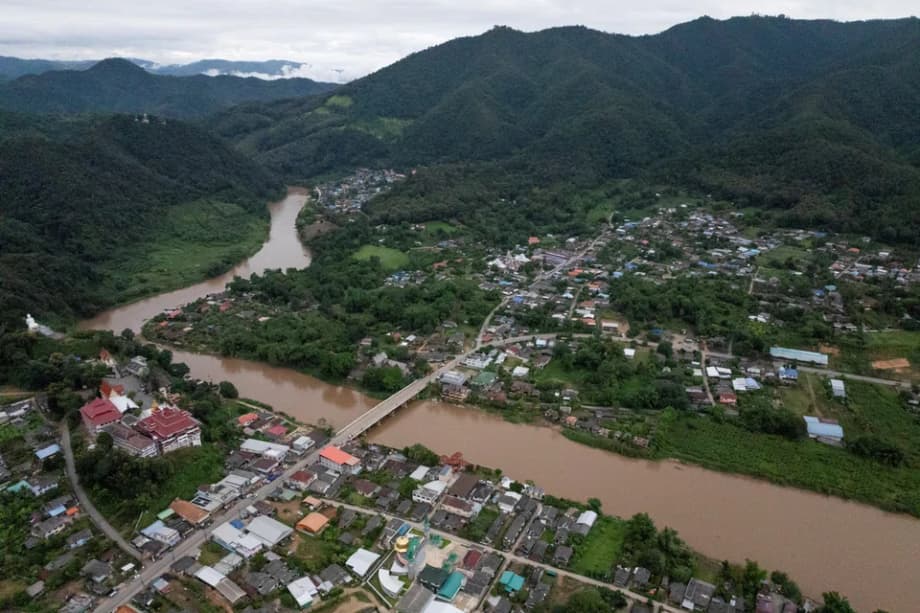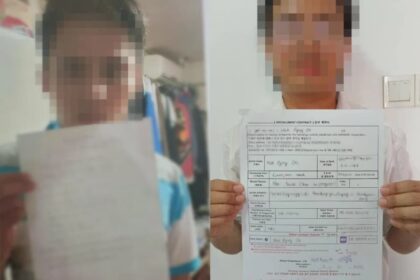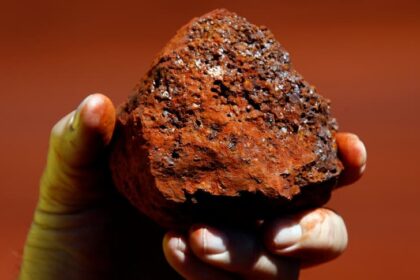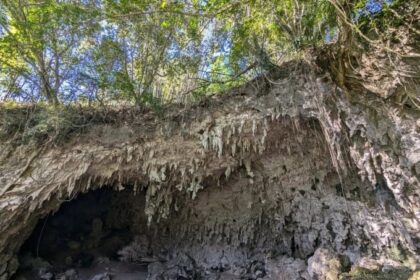A river system under strain
In the fields of northern Thailand, 59 year old farmer Tip Kamlue once relied on the Kok River for irrigation. The Kok flows out of the hills of Myanmar and meets the Mekong, a river that ties the region together from its highland sources to the delta. After authorities warned in April that the Kok might be contaminated, she shut down the pumps that fed her plots. Groundwater now reaches her pumpkins, garlic, sweet corn and okra, but the change has remade the way she farms and the way she sees the river that raised her family.
New research points to a crisis that stretches far beyond a single valley. Across mainland Southeast Asia, more than 2,400 mines, many of them illegal or poorly regulated, sit along rivers and streams. Analysts with the Stimson Center used satellite images to assemble a first region wide inventory of mining that could pollute waterways. They mapped 366 alluvial mining clusters, 359 heap leach sites and 77 rare earth extraction zones that feed the Mekong Basin.
The Mekong is Asia’s third largest river. It supports the daily lives of more than 70 million people and anchors an export economy built on rice, shrimp and fish. For years many regarded it as a relatively clean system. Large stretches of the basin have thin oversight, with overlapping jurisdictions or conflict zones where rule of law is weak. Those gaps have allowed intensive activity that puts toxic chemicals into the same waters that hundreds of towns and villages depend on.
How mining poisons rivers
Different mining methods create different pollution pathways, yet the end point often looks the same. Sediment clouds the water and chemicals ride flood pulses into canals and fish habitat, then into household taps. Contaminants settle into floodplains where people grow rice or forage for river foods. When the rains return, those deposits can be stirred up and carried downstream again.
Alluvial gold and heap leach operations
Alluvial mining for gold, and in some areas tin or silver, takes place on or beside riverbeds where miners strip sediment and sift it for ore. The practice accelerates erosion and churns up fine particles that smother fish spawning grounds and reduce water clarity. Heap leach sites, which can target gold, copper, nickel or manganese, pile crushed ore on lined pads and flush it with chemicals to pull out valuable metals. Sodium cyanide is common in gold extraction, and acid drainage from exposed rock can mobilize metals into water. When operations spill, or when waste ponds overflow during storms, the mix flows into creeks and rivers.
In situ leaching for rare earths
Rare earth elements are essential for magnets that power wind turbines, electric vehicles and many electronics. In mainland Southeast Asia, the dominant method to extract them is in situ leaching. Operators pump large volumes of water mixed with ammonium sulphate and other reagents into hillside soils to dissolve rare earths from clay layers. They capture the mineral rich slurry in a series of downhill ponds, and the waste is often sent back into nearby streams. This method uses huge amounts of water and leaves behind a cocktail of chemicals and heavy metals such as arsenic and cadmium, which can persist in the environment.
Thai researchers tracking the Kok River, which begins in Myanmar, have found a contamination fingerprint consistent with new rare earth and gold mining upstream. Dr Tanapon Phenrat, a senior researcher with Thailand Science Research and Innovation, led testing in 2025 that detected arsenic along with heavy rare earths, including dysprosium and terbium.
Dr Tanapon Phenrat said: “It has only been two years since the rise of rare earth and gold mining in Myanmar at the Kok River’s source. We are already seeing arsenic and heavy rare earths in the river, and levels will rise sharply unless the mining is stopped.”
Analysts who assembled the regional database said the sheer scale of mining along tributaries of the Mekong, Salween and Irrawaddy should alarm governments that depend on these rivers for food security and economic growth. Brian Eyler, a senior fellow at the Stimson Center, underscored the governance gap.
Brian Eyler said: “The scale is striking to me. So much of the Mekong Basin sits outside effective national laws and sensible regulations, and that makes it ripe for unregulated activity at a very high level of intensity.”
From Myanmar hills to global supply chains
Myanmar has become a major source of heavy rare earths since the military seized power in 2021. The mining boom is tied to the war economy. Armed groups and militias in the borderlands fund themselves by taxing extraction and trade in areas where government oversight is limited. Forests have been stripped for access roads, hillsides pocked with pits and ponds, and streams now run brown where they once ran clear.
Raw materials from Myanmar typically move by truck to China for processing. China has a near monopoly over the complex steps that turn rare earth oxides into powerful magnets used in wind turbines, electric vehicles and defense systems. Mines in Myanmar and Laos often rely on technicians from China who bring experience with in situ leaching, a technique refined inside China before stricter environmental rules shifted much extraction across the border.
Asked about environmental performance abroad, China’s Foreign Ministry pointed to rules it says Chinese companies must follow when they invest overseas.
China’s Foreign Ministry said: “The Chinese side has consistently required overseas Chinese enterprises to conduct their production and business operations in accordance with local laws and regulations, and to adopt stringent measures to protect the environment.”
Evidence of contamination and health risks
Thai authorities have documented dangerous readings on the Kok River since the most recent mining surge. The Department of Pollution Control reported arsenic levels near four times the World Health Organization guideline in some samples from the Kok, a tributary that runs through Chiang Rai and meets the Mekong. Researchers also detected heavy rare earths in the water and sediments, a sign of active releases upstream. Tests do not cover every possible pollutant, and some scientists have called for screenings that include radioactive elements associated with rare earth deposits.
Exposure to arsenic over time is linked to cancers of the skin and internal organs, along with cardiovascular disease. Mercury damages the nervous system. Cadmium harms the kidneys and can weaken bones. Contamination can reach people through drinking water, fish and shellfish, and even through crops irrigated with polluted water. Children, pregnant women and older adults face particular risk because exposure can have cumulative effects.
For farmers along the Kok and Mekong, the science aligns with what they see in daily life. Skin rashes and blisters after contact with river water have been reported by villagers. Fish catches have dropped. Livestock suffer similar symptoms after wading or drinking from streams that now run turbid.
Tip Kamlue, the farmer in Tha Ton, worries about losing far more than one growing season as contamination persists.
Tip Kamlue said: “It is like half of me has died. I want the Kok River to be the way it used to be, where we could eat from it, bathe in it, play in it and use it for farming.”
Flooding multiplies the damage. In recent rainy seasons, high flows have pushed contaminated mud across low lying fields, coating rice paddies and orchards. Clean up is costly and slow. Tourism is also at risk in communities that pride themselves on river life, from rafting and fishing to cultural festivals that center on clean water.
Spread beyond Thailand
The pattern does not stop at the Thai border. Satellite analysis has identified more than two dozen rare earth mines in northern Laos in the past three years, with many located inside the Mekong Basin and near protected areas. Laos nominally bans rare earth extraction, yet operations have appeared in remote districts where oversight is thin and investment pressure is strong. Some projects may have local permission without central government approval.
Contamination in Laos can travel quickly into the Mekong mainstream and then to Cambodia and Vietnam. Cambodia relies heavily on fish from the Tonle Sap and the Mekong, and Vietnam’s delta depends on the river for irrigation and drinking supplies. Polluted runoff and metal rich sediments can also affect dam reservoirs, reducing water quality and damaging turbines, which adds an energy reliability concern to a public health emergency.
Government and regional responses
Thailand has announced three task forces to confront the threat. One group focuses on international cooperation with neighbors so upstream sources can be identified and addressed. Another monitors public health along affected rivers and prepares guidance for clinics that may see spikes in contamination related illnesses. A third unit works on water security for communities along the Kok, Sai, Mekong and Salween, including alternative supplies and more frequent testing.
Local groups across Chiang Rai and Chiang Mai are mobilizing volunteers to collect samples and build community level data sets. Many want public disclosure of official test results and clear benchmarks tied to international standards. Researchers with regional institutions say a shared monitoring network across the basin would allow authorities to spot trouble faster and assign responsibility for clean up more credibly.
Infrastructure fixes such as sediment traps or small barriers on tributaries have been discussed. Civil engineers caution that these will take time to design and build, and they will not stop dissolved contaminants. Cross border enforcement is the larger hurdle. Many of the mines sit inside conflict zones in Myanmar or remote districts in Laos where state authority is fragmented or contested. That makes diplomatic engagement and trade leverage central to any lasting solution.
What can be done now
Specialists who study river pollution point to immediate steps that can reduce harm while governments work on bigger fixes. Drinking water systems that draw from affected rivers can add treatment steps that target metals, and field kits can help utilities adjust in real time. Clinics in high risk districts can screen for arsenic and other metals in patients who present with symptoms consistent with exposure.
On the enforcement side, the most effective near term measure is to shut down unregulated sites that are dumping directly into streams. That requires coordination among border agencies and clear instructions to local authorities who may be under conflicting pressures. Buyers in downstream industries, including producers of magnets and electronics, can strengthen due diligence and require proof that rare earth inputs come from operations that meet environmental standards. The Mekong River Commission can support a transparent data platform and a rapid response protocol that helps countries act when readings exceed agreed limits. A sustained effort that mixes science, diplomacy and market pressure will decide whether river communities get relief before more damage is done.
Key Points
- New mapping identifies more than 2,400 mines across mainland Southeast Asia with a high risk of polluting rivers.
- At least 366 alluvial, 359 heap leach and 77 rare earth sites drain into the Mekong Basin, a lifeline for over 70 million people.
- In situ leaching for rare earths uses large volumes of water and chemicals that often flow back into streams.
- Thai tests on the Kok River found arsenic near four times the World Health Organization guideline and heavy rare earths in water and sediment.
- Myanmar has become a leading source of heavy rare earths since 2021, with raw materials transported to China for processing.
- China’s Foreign Ministry says companies must follow local laws and adopt measures to protect the environment abroad.
- Thailand formed task forces to coordinate cross border efforts, monitor health impacts and secure alternative water supplies.
- New rare earth mines in Laos raise risks for Vietnam and Cambodia as pollution spreads through the Mekong system.












